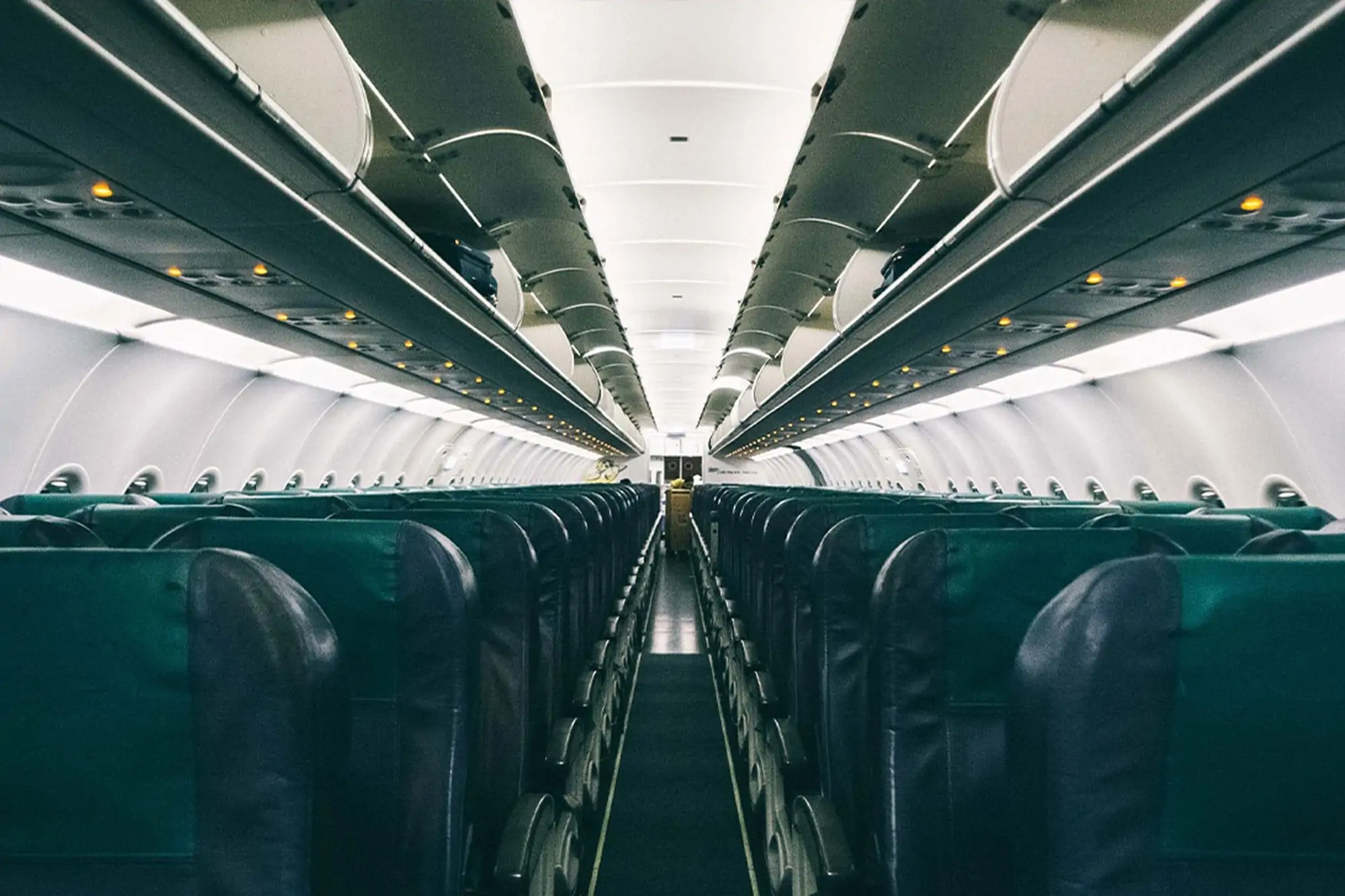Want to embed OLED lighting into your products?
Learn more about how OLEDWorks can work with you to bring your ideas to reality.
Imagine OLED Light for Aerospace Applications…
The design and engineering of the interior cabin of planes is a balancing act between space utilization, operation, maintenance costs, safety and regulation requirements, and passenger comfort. Lighting technology integration can play a critical role in this balance. Lighting fixtures in the cabin are typically recessed with uneven, high-glare illumination that can cause uncomfortable strain to passenger and crew members’ eyes.
These fixtures can be bulky, adding unnecessary weight that results in extra fuel consumption and monopolizing precious space within the cabin. Integrating OLED lighting can address many of these challenges. The uniform surface illumination and glare-free nature of OLED lighting technology means that no additional optical elements such as lenses or diffusers are needed. This keeps fixtures simple and low-profile. Panels are ultra-thin (less than 1mm) and lightweight, highly efficient, and have long lifetimes. As a result, OLED lighting offers space savings and weight reduction with low power consumption. The compact nature of OLED lighting, combined with the diffuse illumination from the panel, gives designers flexibility for integration on horizontal and vertical surfaces and in compact spaces, providing more design freedom to optimize cabin lighting for passenger and crew comfort.
Communication within the cabin can be critical during loading and unloading or in emergencies. With OLED lighting technology, high-contrast segmentation allows for dynamic communication with passengers or crew through light for improved safety. The ability to animate and reconfigure information within the same panel, combined with the uniform, low-glare light output for optimal direct viewing comfort, offers new opportunities when designing with OLED lighting.
As an added benefit, the illumination from OLED lighting is also low in spectral content shown to interfere with melatonin production, which is ideal for helping passengers get the rest they need and adjust to their new destinations.

